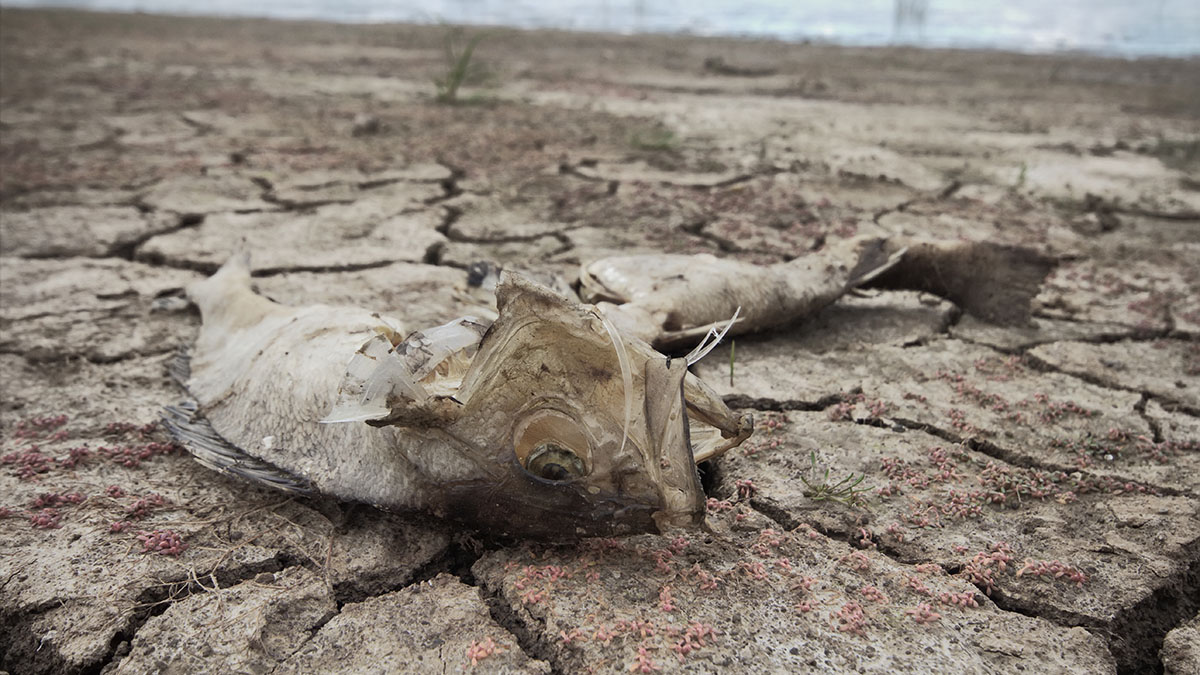how climate change will slowly poison our seafood

Algal blooms sound like some sort of harmless display of aquatic flora in a nature documentary voiced by some deep voiced celebrity, preferably with a Cambridge accent. But some of these blooms are extremely toxic and the poisons they exude can easily end up in the shellfish you were about to put in your mouth and give you food poisoning. We’ve known about blooms like this for a long time and how to manage them so they haven’t been such a big deal. However, with the oceans warming up, the algal blooms grow a lot bigger on average, and their growing season is longer in the Atlantic. In other words, climate change could put poison seafood on your plate.
Since 1982 both the Atlantic and the North Pacific have been steadily getting warmer, with the Atlantic seeing between 1 to 3 °C increase in temperature depending on the region, while the North Pacific is seeing just under 0.6 °C rise. Looking specifically at coastal areas, researchers saw toxic blooms last longer than usual and grow larger in size in the Atlantic, and matching the records for duration and spread in the Pacific. Since the Pacific has different water circulation than the Atlantic, it’s a bit colder right now, but as it keeps warming, researchers warn, it too will start seeing more toxic algae.
This is particularly bad news for seafood lovers since the microorganisms in question produce saxitoxin and okadaic acid that can find its way into crabs, shrimp, lobsters, oysters, and fish. The former causes numbness and all sorts of minor but very unpleasant neurological problems. The effects of the latter are best summarized as classic symptoms of food poisoning, i.e. the contents of your stomach will attempt to escape from every available orifice, possibly at the same time at high velocity. Nations where seafood is a major part of a typical diet, like Japan, South Korea, and Iceland could be particularly hard hit if temperatures continue to rise and the blooms are not controlled.
All of this should be very sobering because when we talk about how global warming will affect us the focus tends to be on dire droughts, storms, crops, and the spread of tropical diseases, but seldom do we hear about our food becoming poisonous because ocean waters are warmer. It’s unlikely that it would lead to the collapse of fisheries across the world, but nations which rely on the calories from seafood, lacking enough farmland, importing a lot of the meat they consume, will need to invest in algae management, extra scrutiny of seafood they raise and catch, and import more meat, meaning a noticeable increase in food prices for their populations.
Whenever the subject of climate change comes up, there’s always a denialist ready to jump in with a quip that will read exactly like this: “notice they had to change ‘global warming’ to ‘climate change’ because it was disproven and they started calling it something else” which is on par with saying that what used to be called electricity is now called the electromagnetic spectrum after the light bulb failed to catch on. While global warming and climate change are often used interchangeably outside of scientific contexts, they mean two different, albeit related things, and the these news about toxic algal blooms about to pollute our seafood illustrate the difference very clearly.
Global warming refers to the process by which temperatures are increasing with more and more greenhouse gases being dumped into the air and very quickly running out of possible heat sinks. Climate change is a shorthand to refer to the changes in geology, ocean currents, weather events, and living things’ migration patterns and lifecycles caused by the warming. Seeing an alarming rise in ocean temperature correlated with increases in greenhouse gas emissions is the warming part. Toxic algal blooms thriving in waters far more hospitable to them, with longer bloom seasons, and the threat they’re posing to our fisheries and the shellfish we eat is climate change.
This is why we can’t afford to nitpick epistemology in op-eds that say “yeah, you say we’re certain the world is warming but how sure are you that you’re certain?” like Bret Stephens did in his NYT debut. A key source of nutrients for billions of people is slowly but surely being fouled by climate change. It would be suicidal to ignore the implications of this on the global stage. The dreaded Somali pirates turned to hijacking ships and holding crews ransom were often fishermen whose catch dried up thanks to trawlers. Can you use your imagination and consider what might happen if fishermen in other not so well off nations can’t sell the fish they catch because it’s poison?
See: Gobler, C., et. al., (2017) Ocean warming since 1982 has expanded the niche of toxic algal blooms in the North Atlantic and North Pacific oceans, PNAS, DOI: 10.1073/pnas.1619575114
[ this article was originally featured in Rantt Politech ]





